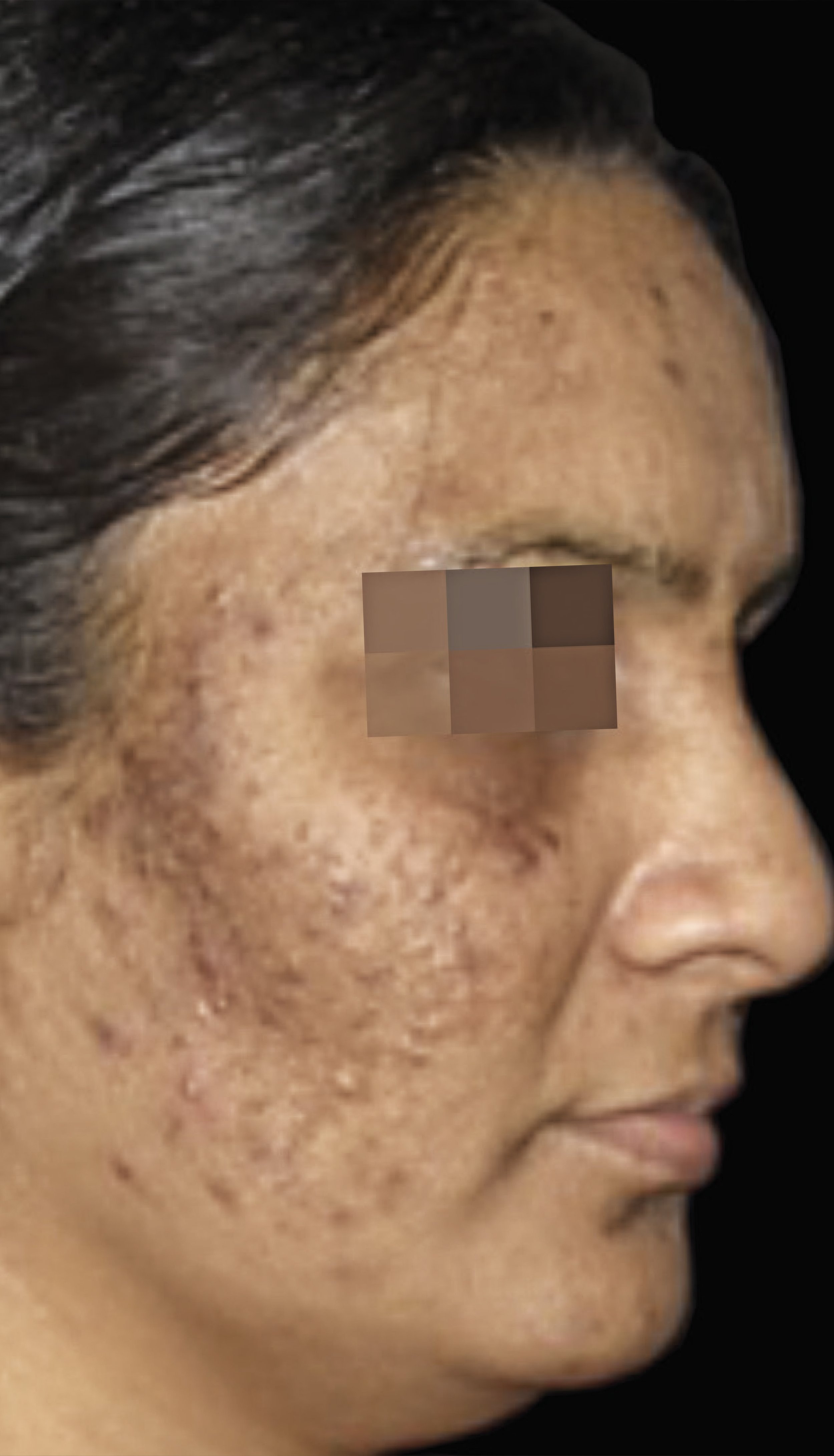Cosmelan Peel
Powerful depigmenting peel
Cosmelan Peel
$950
Includes 3 appointments: a pre-peel, the Cosmelan application two weeks later, and follow up appointment for touch up if needed 3 weeks later. An aftercare kit for up to 2 months is also included. This peel is ideal for clients with stubborn pigmentation and/or melasma. Most clients need just one treatment and results last for about a year and a half with proper aftercare.
Before and Afters
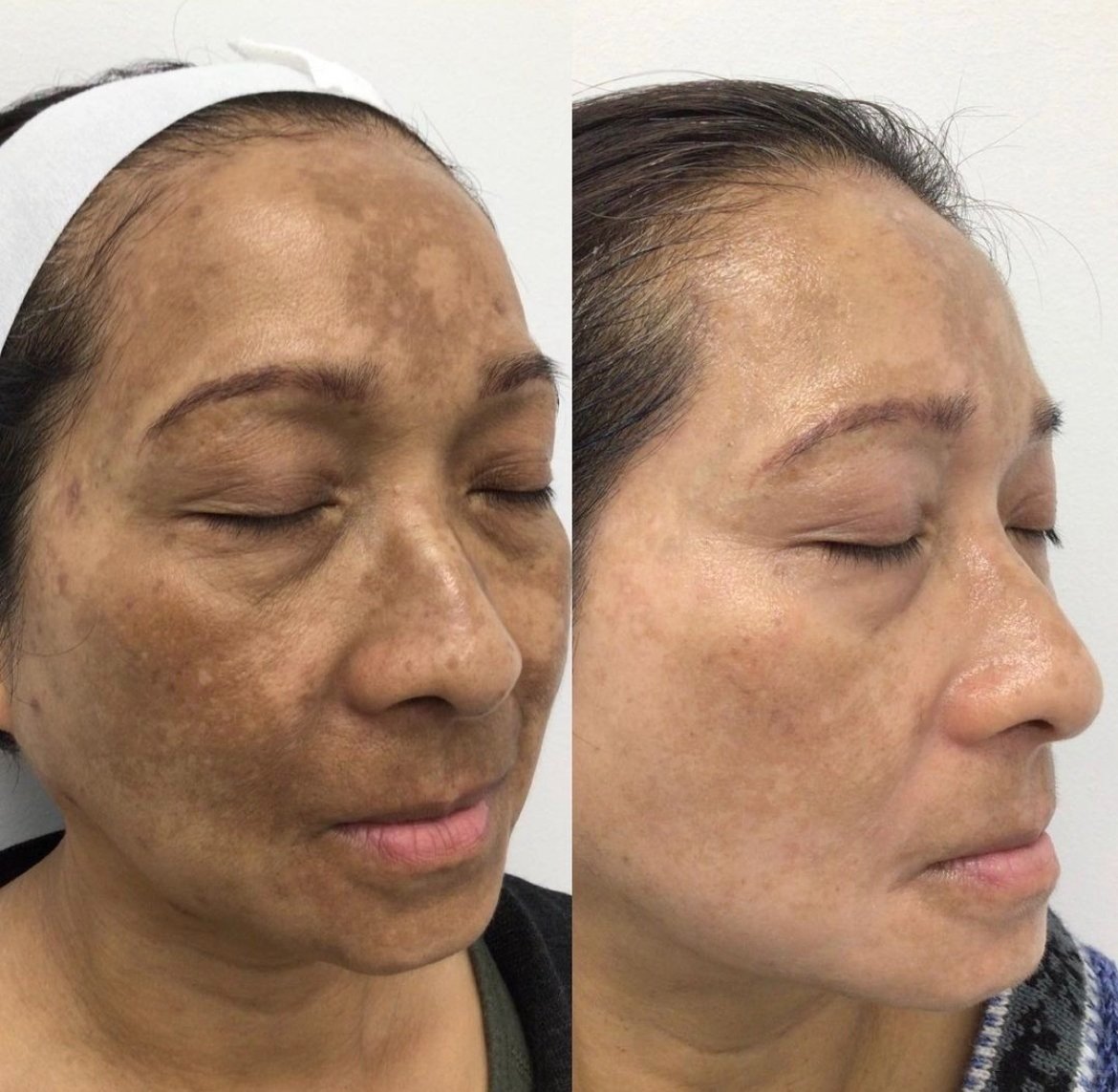
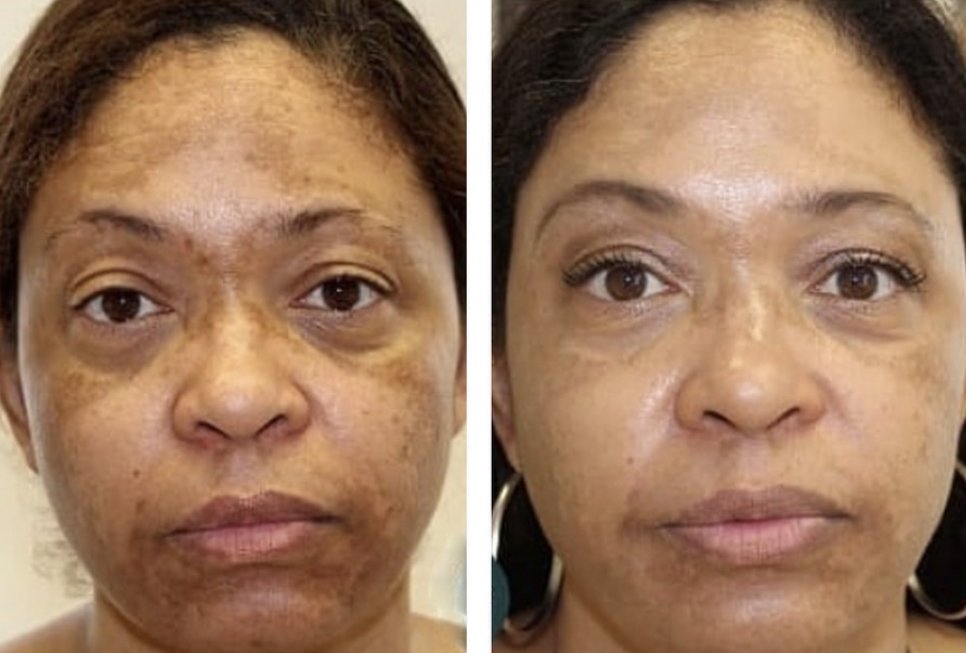
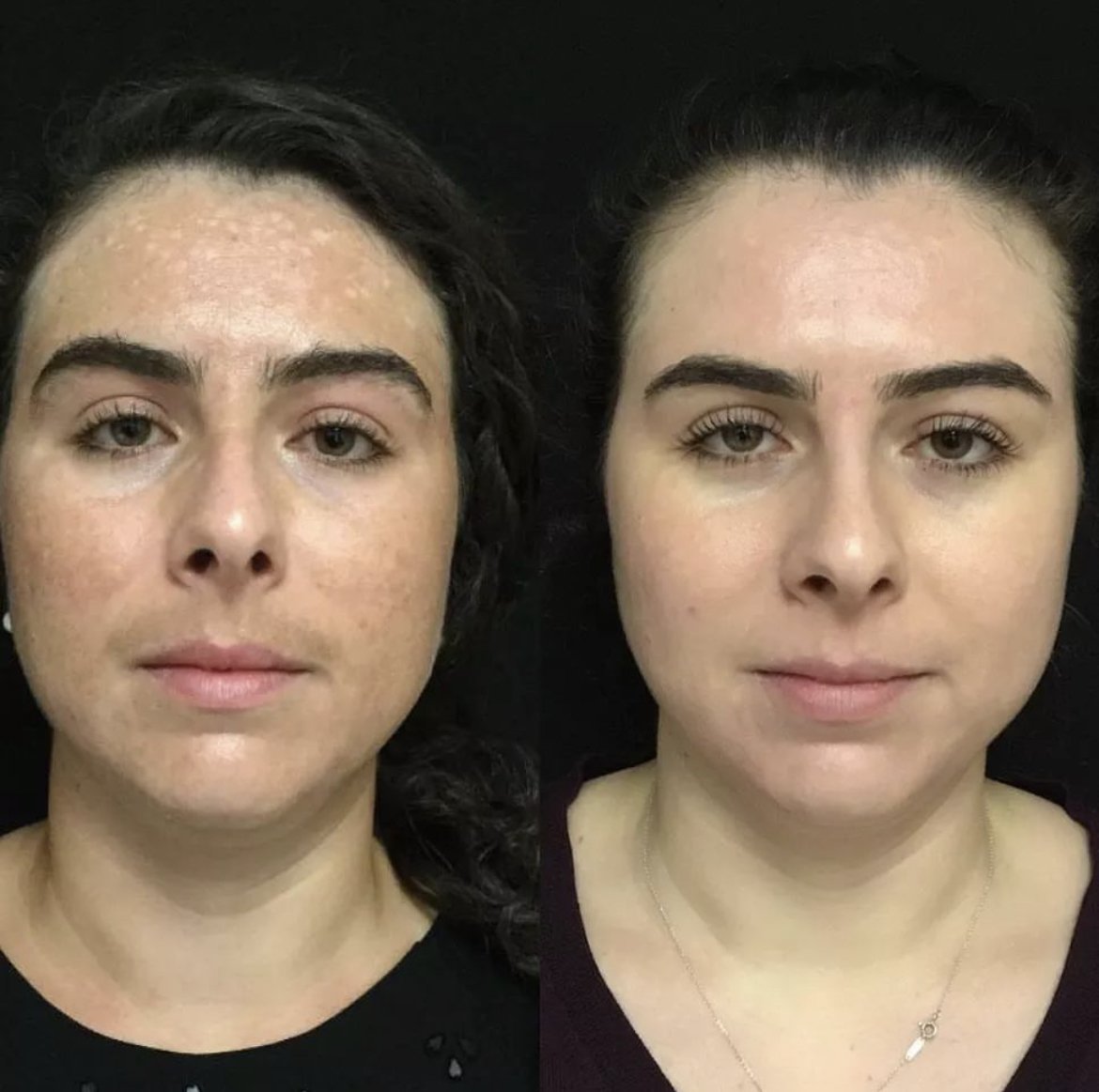
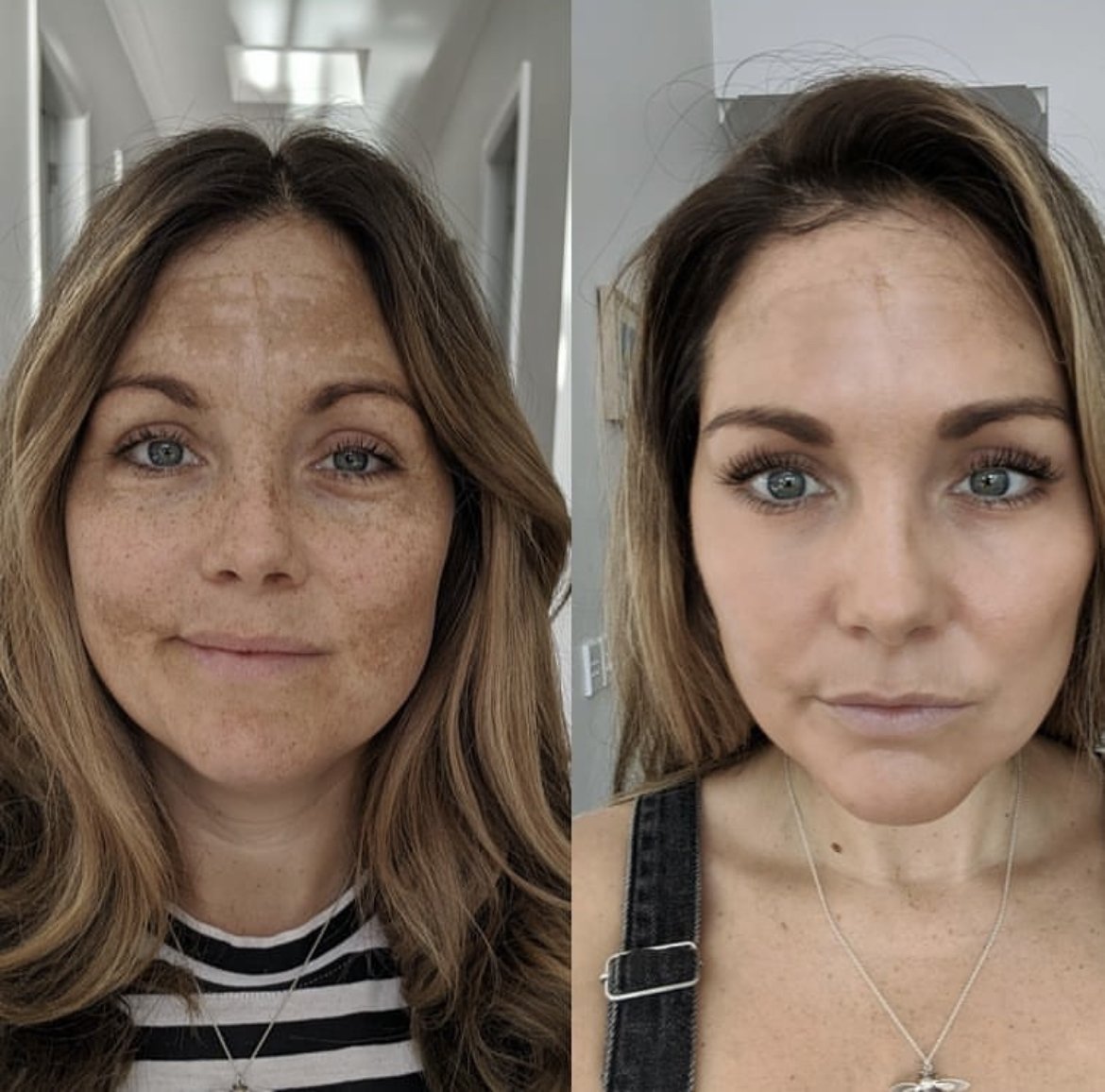
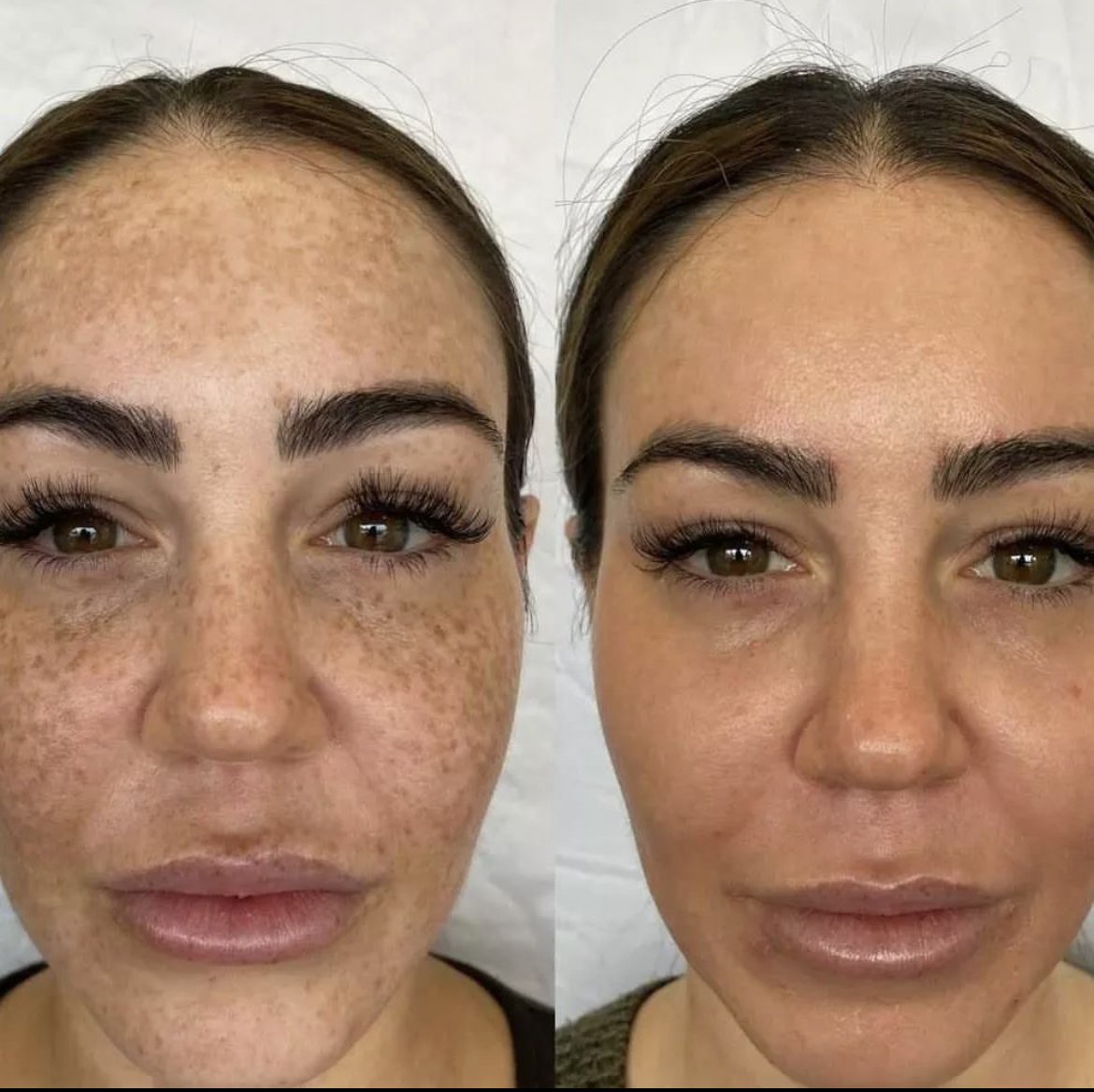
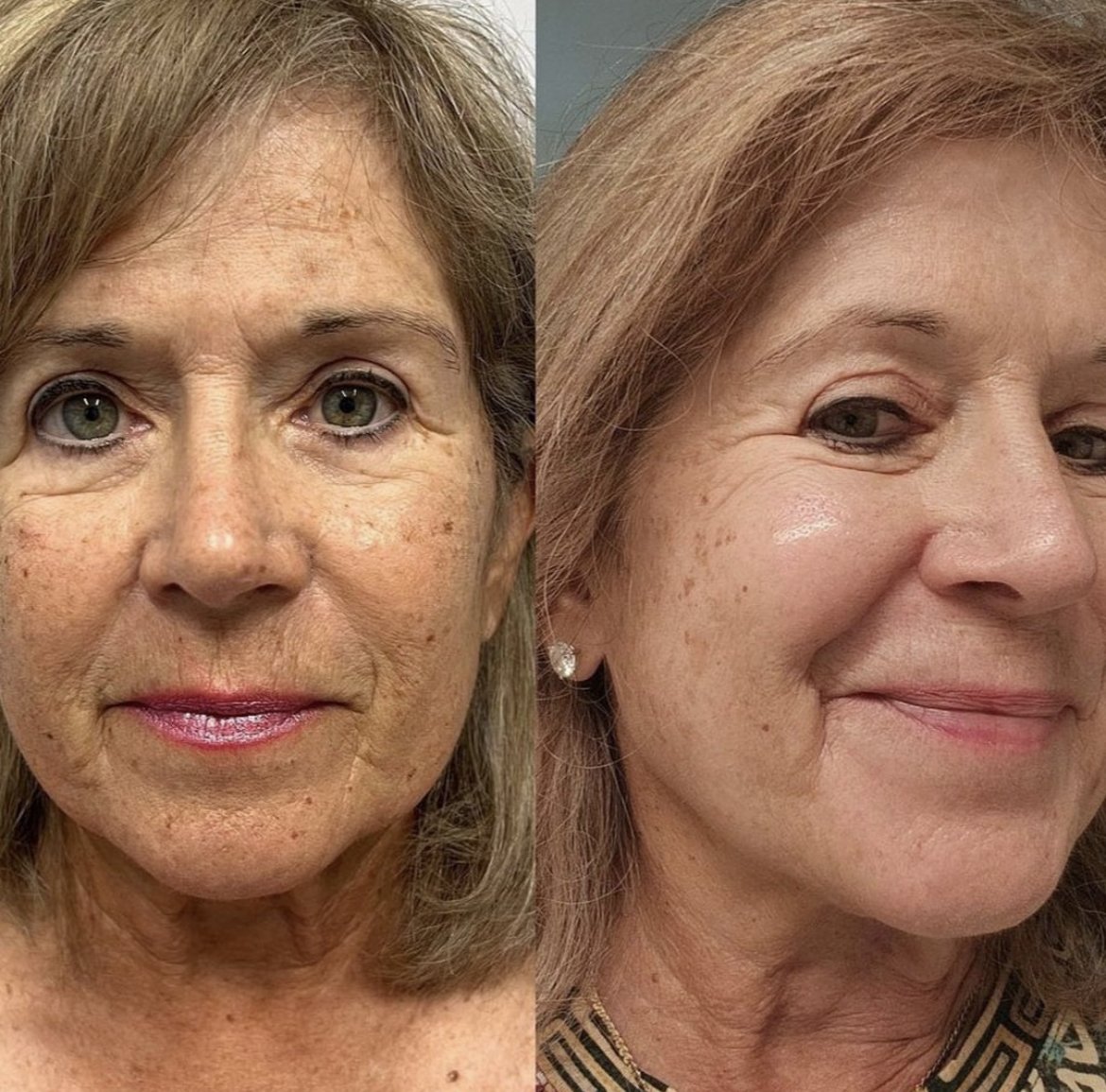
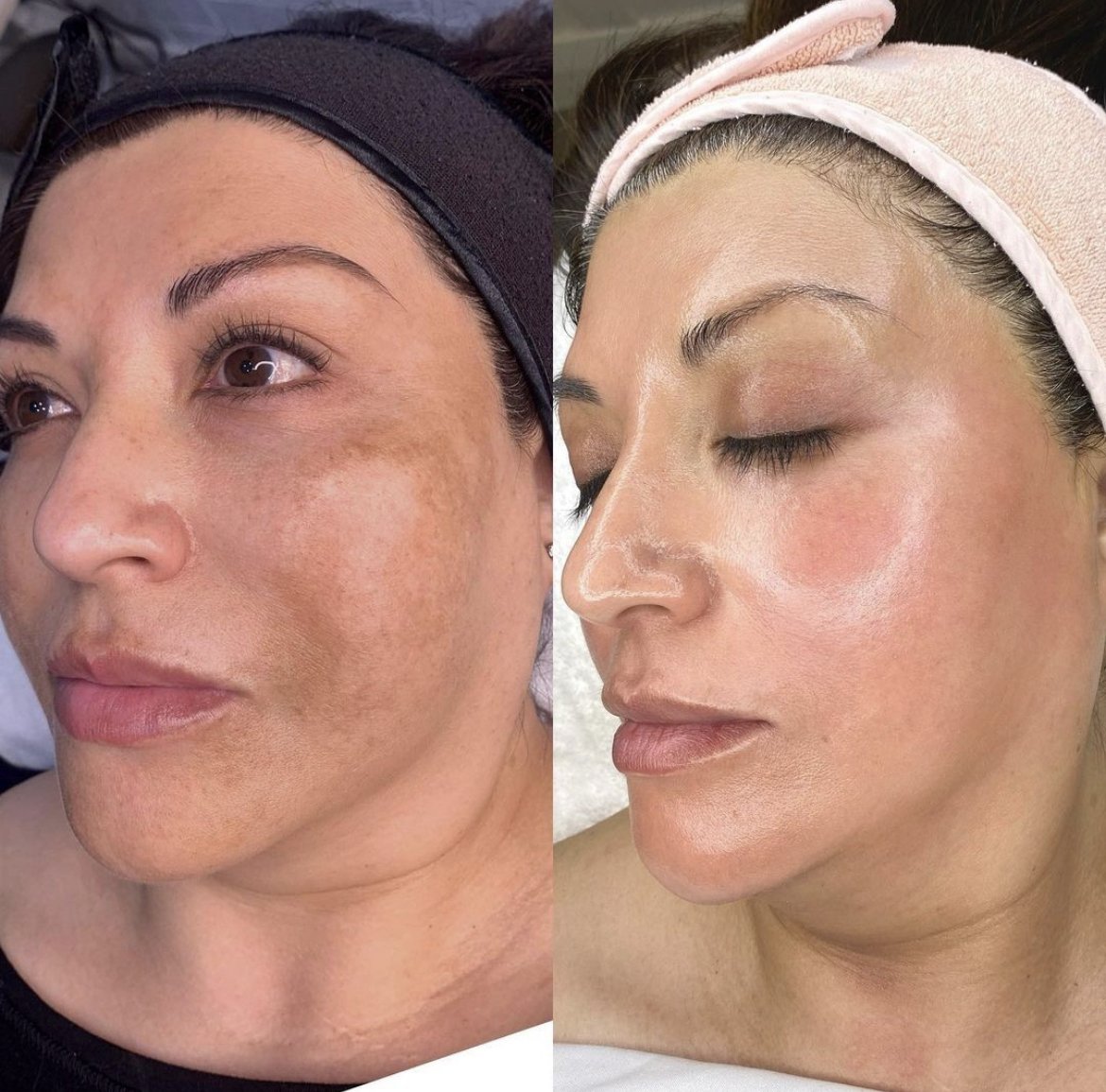
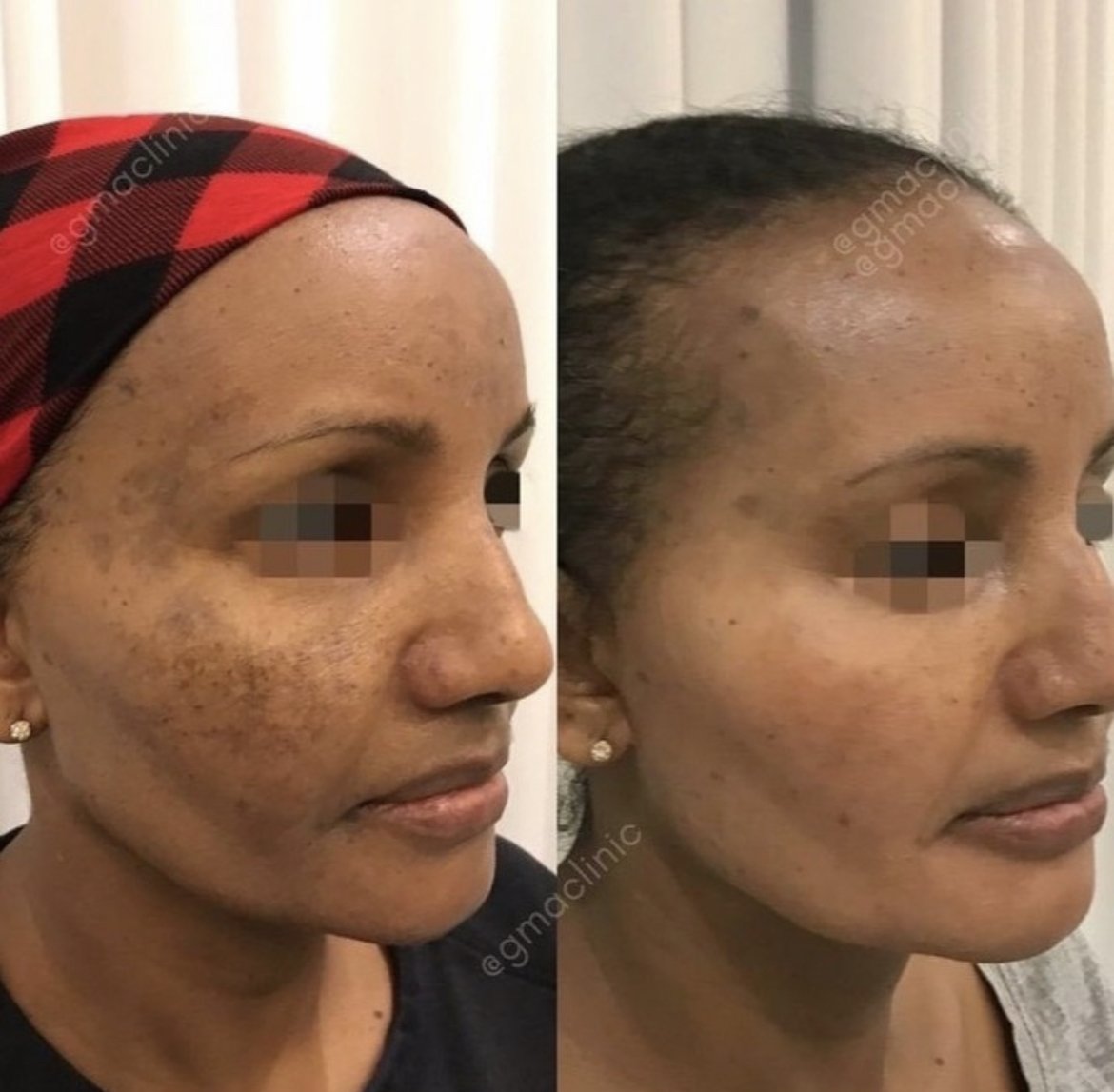
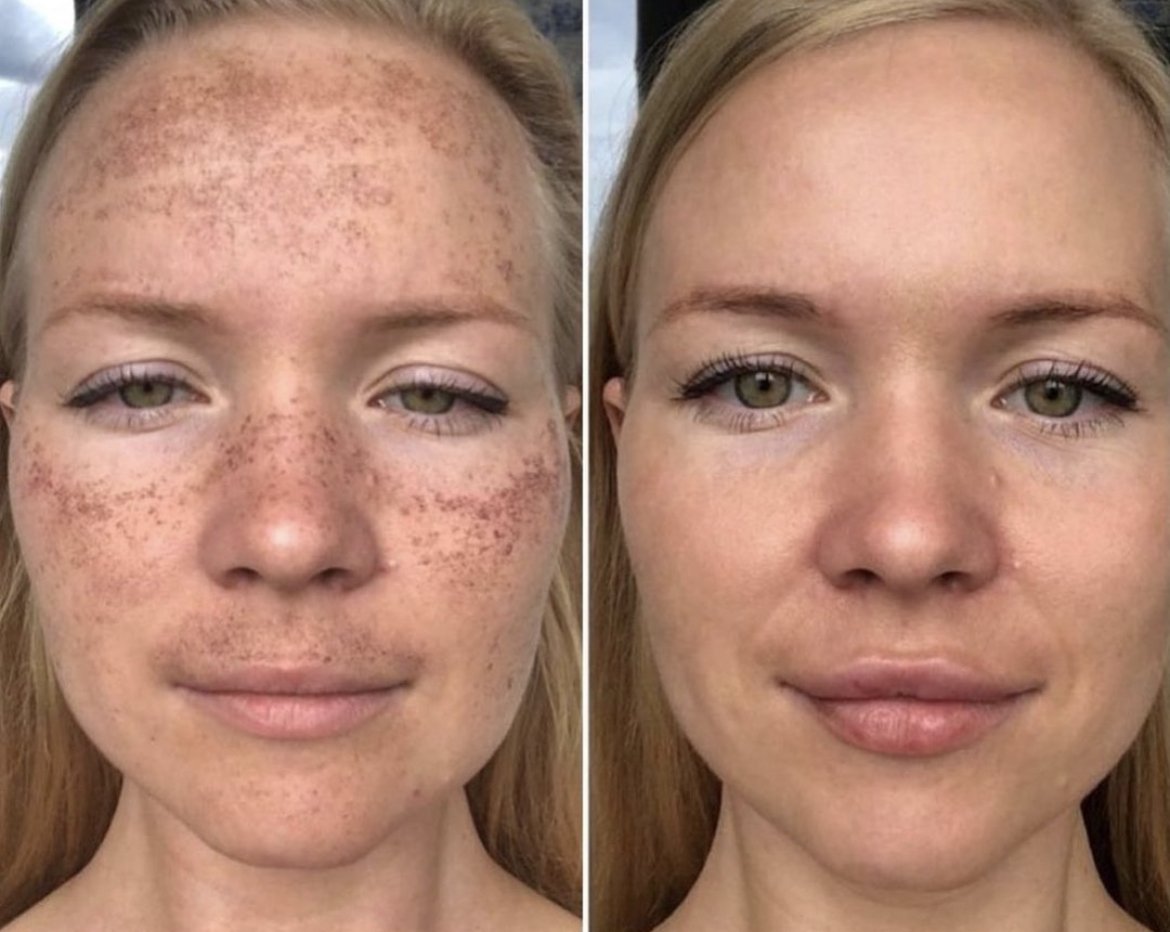
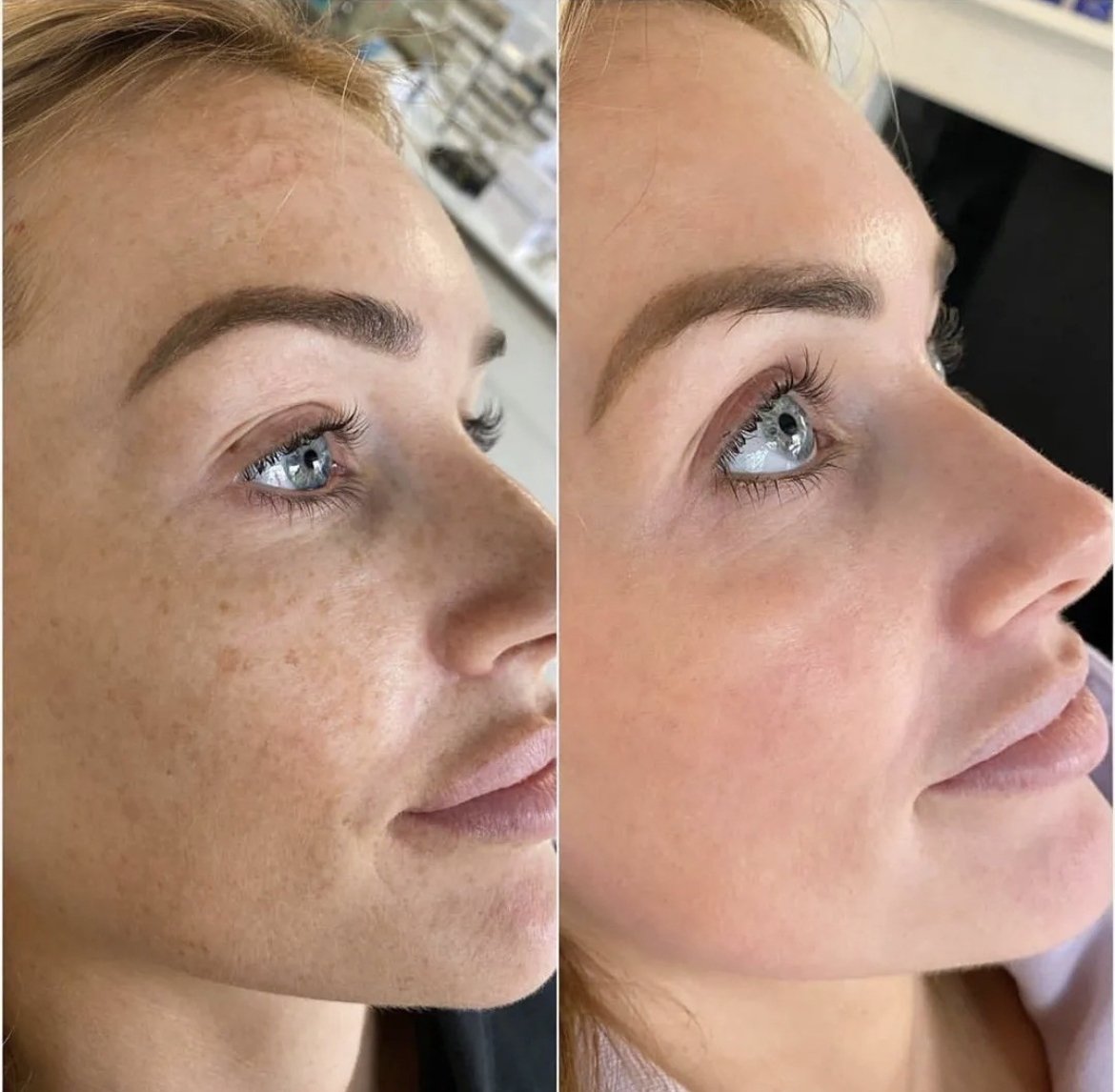
images from @cosmelan.official via Instagram
What is a Cosmelan Peel?
Cosmelan is one of the fastest and most effective ways to permanently eradicate skin discolouration caused by hormones. The treatment is non-invasive and painless; just one round is enough to achieve great results. This method restores the skin’s uniform colour, adds smoothness and brings out a natural glow!
cosmelan® is a depigmenting method with an intensive corrective effect that regulates overproduction of melanin in the melanocytes, inhibiting and controlling the appearance of new dark spots.
cosmelan® reduces the appearance of skin discolorations brought on by hormonal imbalance, excessive sun exposure, and various other triggers, in all skin types.
cosmelan® 1 intensive face mask (in office treatment)
Significantly reduces and eliminates hyperpigmentation.
Lightens the pigment on the surface of the skin, and suppresses the pigment.
cosmelan® 2 depigmenting cream (at home treatment)
Continues the depigmentation results achieved from cosmelan 1 mask.
Achieves short and long-term results by keeping hyperpigmentation under control and preventing any recurrence.
Limits the production of new melanin.
Gentle, safe and highly effective results make cosmelan® the BEST and #1 solution for hyperpigmentation.
What is melasma & hyperpigmentation?
Melasma
Melasma is a skin condition that causes dark, discolored patches on your skin.
It is also called chloasma, or the “mask of pregnancy,” when it occurs in pregnant women. The condition is much more common in women than men, though men can get it too. According to the American Academy of Dermatology, 90 percent of people who develop melasma are women.
Melasma causes patches of discoloration. The patches are darker than your usual skin color. It typically occurs on the face and is symmetrical, with matching marks on both sides of the face.
photo courtesy of mesoestetic" - Age: 46 • Type of pigmentation: melasma
Brownish colored patches usually appear on the:
cheeks
forehead
bridge of the nose
chin
upper lip
Estrogen and progesterone sensitivity are often associated with melasma, though the cause isn’t completely known or agreed upon. Birth control pills, pregnancy, and hormone therapy can all trigger melasma. Stress and thyroid disease are also thought to be causes of melasma.
Sun exposure can cause melasma because ultraviolet rays affect the cells that control pigment (melanocytes).
While not all cases of melasma will clear up with treatment, there are things you can do to make sure the condition doesn’t get worse and to minimize the appearance of the discoloration. These include:
using makeup to cover areas of discoloration
taking prescribed medication
wearing sunscreen every day with SPF 30
wearing a wide-brimmed hat that shields or provides shade for your face
Wearing protective clothing is especially important if you’ll be in the sun for an extended period of time.
Post Inflammatory Hyperpigmentation (PIH)
Post-inflammatory hyperpigmentation (PIH) happens when your skin makes extra melanin after it has been irritated or injured. Melanin is a natural pigment that is responsible for the color in our hair, skin, and eyes.
PIH can affect either your epidermis, which is your skin’s surface level, or your dermis — a deep layer of your skin.
When your skin cells react to damage or irritation by making extra melanin, post-inflammatory hyperpigmentation is the result. This skin condition shows up as tan, brown, dark brown, or even blue-gray patches and spots on your skin.
image courtesy of mesoestetic" - Age: 25 • Type of spot: post acne PIH
The most common causes are acne, eczema, and impetigo, but any type of trauma or irritation to the skin has the potential to cause PIH. Other commonly reported post-inflammatory hyperpigmentation causes include:
Infections
Bug bites
Burns
Razor bumps
Rashes
Allergic reactions
Psoriasis
Some medical or cosmetic procedures can also cause PIH. Laser or light therapies, radiation therapy, cryotherapy, and chemical peels have been linked to post-inflammatory hyperpigmentation.
The sun’s UV rays can have a big impact on PIH. Proper UV protection is important to prevent PIH skin spots from darkening and new ones from forming. Avoid the sun when possible, wear protective clothing, and use a broad-spectrum sunscreen with a minimum SPF of 30 every day.
What is the downtime?
Expect to peel anywhere from 7-14 days (generally 10 days). You must NOT wear makeup for 7-10 days and you cannot shave the area until you’re fully healed.
Who is not and ideal candidate for the peel?
Pregnant or nursing people cannot receive this peel, along with people who are experiencing acute skin inflammation, including acne and finally those who are currently on oral retinoid therapy. Cannot have active Herpes Simplex blisters/ cold sores.
How do I prepare for this procedure?
A consultation is necessary to determine the skin phototype and the type of discolouration.
No glycolic acid or retinol at least 5 days prior to treatment.
No waxing in treated areas one week prior to treatment.
No scrubs or facial exfoliation on the day of treatment.
No tanning beds or heavy sun exposure 2 weeks prior to your treatment.
What is the aftercare?
The aftercare is part of the treatment for this procedure, so it’s imperative that you understand that the take home kit you will recieve is essential in giving you the results we want! It is a three product kit including an at home depigmentation cream, a healing balm, and an SPF and using them for at least two months is required!
pictured above: oil removing solution and cosmelan 1 that are used in clinc; cosmelan 2, melan recovery, and melan 130 spf that are your aftercare kit to take home
Day 1: Intense depigmentation 🕒 8-12 hrs
After the amount of time indicated by your provider (between 8 -12 hours) the mask must be removed by carefully rinsing with tepid water. Repeat until the product is completely eliminated. Apply melan recovery over the treated area. 24-48 hours after removing the mask, the skin may be sensitive, tight and red.
Day 2: Continuous depigmentation 🕒 1 day
After cleansing apply melan recovery followed by melan 130+ pigment control. In case of continuous sun exposure, reapply sunscreen every 2 hours.
Month 1: Control of hyperpigmentation 🕒 1 month
Starting Day 3 apply a pea sized amount of Cosmelan 2 three times a day (morning and night) followed by melan recovery 15 minutes later. At daytime, apply melan 130+ pigment control. In case of continuous sun exposure, reapply sunscreen every 2 hours. In this phase you can usually feel itching, burning and notice the skin dryer and tight. The skin can be irritated, sensitised and may start to peel.
Month 2: Controlling reappearance 🕒 1 month
Apply Cosmelan 2 morning and night, followed by melan recovery 15 minutes later. Apply melan 130+ pigment control every morning. In this phase you will notice skin has recovered its hydration levels, has stabilized and looks even and renewed.
Month 3-6: Controlling reappearance 🕒 3 months
Apply Cosmelan 2 at night, followed by melan recovery 15 minutes later. Apply melan 130+ pigment control every morning. In this phase you will notice skin has recovered its hydration levels, has stabilized and looks even and renewed.
**IN THE CASE OF EXTREME SENSITIVITY during any phase, consider spacing out the applications of Cosmelan 2, without abandoning the treatment altogether.**
**After 6-8 weeks you will need to return to the clinic to purchase a replacement Cosmelan 2 jar to continue treatment ($340)**
We recommend a consistent and effective use of melan recovery and melan 130 pigment control when following the cosmelan method. Not using sun protection reduces or eliminates it's effectiveness.
General aftercare that we strongly suggest:
Do not do anything that will cause your body to become heated or to perspire. This may lead to inflammation and/or breakout. Exercise, sauna, hot tubs, ect. Refrain until your skin is finished peeling, though using caution throughout your series is suggested.
Always use lukewarm water on your face and do not scrub. Avoid chlorine.
Do not under any circumstances pick or manually peel your skin, you can risk post inflammatory hyperpigmentation. If it becomes bothersome you may choose to use small nail scissors to gently remove without pulling.
You must take precautions to avoid sun exposure in order to protect your skin as well as to get the full benefit of the peel. Peels increase your skin’s sensitivity to the sun and particularly the possibility of sunburn. Exposure to UV rays can cause hyperpigmentation, freckling and sun damage.
We suggest if you choose to apply makeup after your peel you use mineral based makeup. You should avoid all cosmetics for 7-10 days.
Do NOT get another treatment or procedure (including peels, facials, or microdermabrasion) on the treated area for 30 days following.
While maintaining on Cosmelan 2, discontinue its use for 5 days prior to waxing, and do not restart treatment until 3 days after waxing. Threading can be done normally.
For people with facial hair, do not shave until you are done peeling, generally about 2 weeks.
To avoid injury to the skin, for the 30 days following the peel (and/or touch up application), please do not:
peel, pick, scrape or abrade the skin
have an electrolysis or laser treatment
use tanning beds or sunbathe
perform certain hair services using chemicals
facial wax, thread or use depilatory products
receive injectables
have another treatment until your Esthetician advises you to do so





